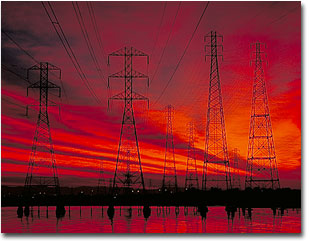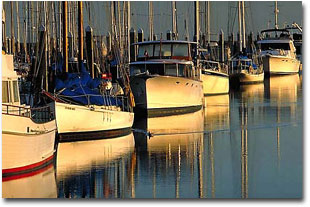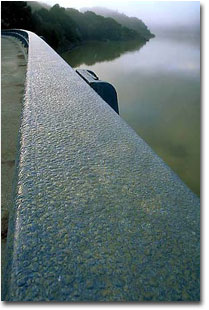|
|
 Hand of Man
Text and photography Copyright Jon Lewis A photograph is really a metaphor of life. As Marcel Proust rightly stated, "The real voyage of discovery consists not in seeking new landscapes, but in having new eyes." I open with this quote because it accurately describes my journey as a nature photographer. Seeing with new eyes is probably the most critical approach towards realizing success in nature photography, whether it be a career or a hobby. In my photography, I'm constantly striving to see in this way, looking at the ordinary to perceive the extraordinary. When I walk into the canvas of nature, wherever it may be, my intention is to see beneath what’s there at a cursory glance. Why? Because photography is more than just a record of what’s there, it’s a communication of an experiential moment. If I’m not present or have no visceral connection with what I’m photographing, my chances for a winning image are diminished. Plugging into and being present and open to the moment allows me to establish a connection that’s at the heart of my imagery. I do this by scouting a location well before a shoot, focusing on a particular area, first with my eyes to see what’s available and then with my mind’s eye to see what’s possible. I determine the broad stroke of where and when and place myself within that nexus of time and space offering the greatest creative potential. Next and perhaps most importantly, I release my preoccupations—the mind chatter of the day or whatever may be going on—and engage with the environment, whatever is present in the moment, not just the sights, but the sounds, smells, feel, the entire experience. In this way it becomes much easier to perceive the important details, much like a child seeing through eyes of wonderment a world that’s magically fascinating.
In my photography, it is these questions that drive my creativity. It begins with an inward focus rather than an outward one. An example of this is a project I assigned myself after returning from a backpacking trip in the Sierra Mountains. On that journey, I witnessed such dramatic light and amazing vistas; I fell into a slump upon returning to my home (at that time in the SF Bay Area). What could I ever hope to reveal when beauty like that was there and I was here? What could I do between now and the next trip (which wouldn’t be until the following summer)? Instead of playing the victim, I began focusing on solutions. I wondered what would happen if I stopped comparing where I was with where I wasn’t? What might I discover by letting go the belief that beauty was only in the mountains or wilderness or places untainted by the hand of man? As I began letting go of some of these self-limiting beliefs, I started to realize what was really inspiring me in the mountains wasn’t just the scenery, it was the light! The more I thought about it the clearer the idea became, it’s the same sun here as there, so why not? Needing a creative outlet between vacations, I endeavored to assign myself a project, utilizing the same skills I learned photographing nature’s dramatic light in the mountains, to reveal the beauty in my own backyard. On my way to work in the mornings and on my way home in the evenings, I would depart in time to catch the fine light between night and day. The shot of the power towers was a result of this commitment to reveal the beauty of nature complimenting the hand of man. Being out before dawn with my camera equipment, as I would in the mountains, led me to this opportunity where a rare combination of atmospheric conditions resulted in an extraordinary sky. This photo marked a turning point for me, bearing the proof of what I was after, that there was indeed beauty all around, all that I needed to do was choose to see it. And I didn’t have to be anywhere special, nature’s beauty can compliment the hand of man quite elegantly.
Then I realized what I was doing wasn’t working and a decision had to be made quickly. I stopped my frenetic search just to be still for a moment, asking myself, “What can I focus on that would compliment this dramatic light? I then realized it was staring me right in the face: The big “ugly” power lines right above my head. They didn’t even register at first because I had closed that possibility in my mind, they were something in the way, and not a part of what I considered in my photographic repertoire. But out of necessity inspiration was born. I ran back beneath the towers to make the best of the situation, framing the lined patterns against the sky’s brilliance. The results were much better than I anticipated and from that I had a realization. Inspiration comes as I work, NOT before. I had set out to find beauty thinking of the wilderness within the city, but I soon found out it wasn’t wilderness I was looking for it, was the discovery of seeing with new eyes. With this newfound awareness, I began exploring the nexus of man and nature more extensively, integrating nature’s beautiful lighting with man-made objects and materials, opening up a whole new photographic genre in my collection.
Another incarnation of these techniques is this shot of the bridge railing on Crystal Spring’s lower reservoir. On yet another self-project, I was photographing Crystal Springs one rainy morning, camera in hand wandering the landscape. I crossed this bridge twice exploring without success. It was gloomy and gray, not the most beautiful weather, but that was no deterrent. I was looking for inspiration, not perfection. There was a lot to take in, but again I stopped my wandering and began my process of tuning in. After I was able to interrupt my initial search mode and start narrowing down my range of focus, what came up for me was the fascinating pattern of water drops covering the bridge railing like a skin. Once the thought came to mind, “Oh look, isn’t that cool.”, I knew where my image lay. I use photography in this way to illuminate the presence of beauty in our world, capturing ephemeral moments on film, opening the possibility for others to see what exists as the result of an intention. I am a believer in photography's potential to reveal our inner truths. It's up to each photographer to discover his or her own truth and then reveal, like a mirror, what that truth is in the images he or she creates. Ironically, instead of an outer focus on the world, great images derive from an inner focus of what is real, true and significant in the heart and mind of the photographer. Through this inner knowing and clarity will come the attraction to the outer reality or manifestation of truth. It’s the question that drives you, “What is it you want to create? What are you looking for and what is it you see that others don't?” Editor's Note - Jon Lewis is a nature photographer and wilderness/life skills coach, founder of Life Tools Photography and lives in Leucadia near San Diego. To contact or learn more about Jon and Life Tools Photography, you may visit his website at www.lifetools.org. JL - NPN 055 Comments on this article? Send them to the editor. |
|
|
 Focusing on the introspective aspects of the environment can reveal both the detail and the big picture and is the key to creating extraordinary images. As I’m exploring, I ask myself, “What’s significant about this place right now? What stands out for me? What’s going on that’s fascinating? What patterns are there? How is the light affecting synergistic and/or contrasting shapes and colors and how can I integrate what I’m seeing into a pleasing image?
Focusing on the introspective aspects of the environment can reveal both the detail and the big picture and is the key to creating extraordinary images. As I’m exploring, I ask myself, “What’s significant about this place right now? What stands out for me? What’s going on that’s fascinating? What patterns are there? How is the light affecting synergistic and/or contrasting shapes and colors and how can I integrate what I’m seeing into a pleasing image? Near 3rd street on the bay in San Mateo when the twinkling of starlight first began yielding to the early light of dawn, I was out exploring. Looking through the viewfinder I had to blow my breath to the side so as not to fog the eyepiece. As I usually do, my eye was searching for natural subjects, my lens pointed downward at the water’s edge watching the painted reflections glowing in brightening light. My attention was so focused I didn’t notice the sky had been transformed. Moving my eye away from the viewfinder to wipe off the condensation, I looked up to be dazzled by the exploding color! The drama of the sky that morning was so rare I was frantic searching for a subject to compliment the swiftly changing light. In a full run I went right past the transformers, not even considering them worthy of this kind of fine light. But hard as I tried to find anything worthwhile, I was at a loss. There was nothing! I went back and forth wasting time looking for something that wasn’t there! For a brief moment, I felt caught in a photographer’s worst nightmare-fantastic light and nothing to photograph!
Near 3rd street on the bay in San Mateo when the twinkling of starlight first began yielding to the early light of dawn, I was out exploring. Looking through the viewfinder I had to blow my breath to the side so as not to fog the eyepiece. As I usually do, my eye was searching for natural subjects, my lens pointed downward at the water’s edge watching the painted reflections glowing in brightening light. My attention was so focused I didn’t notice the sky had been transformed. Moving my eye away from the viewfinder to wipe off the condensation, I looked up to be dazzled by the exploding color! The drama of the sky that morning was so rare I was frantic searching for a subject to compliment the swiftly changing light. In a full run I went right past the transformers, not even considering them worthy of this kind of fine light. But hard as I tried to find anything worthwhile, I was at a loss. There was nothing! I went back and forth wasting time looking for something that wasn’t there! For a brief moment, I felt caught in a photographer’s worst nightmare-fantastic light and nothing to photograph! The photograph of the boats is another example of the way this awareness and intention manifests in my imagery. Again the inspiration came as I was “working” near Coyote Point on the San Francisco Bay, capturing the sunset light reflected in the water. The results this day for inspiring natural images were lackluster and I was about to pack up, when I noticed the warm light glowing from the bright white hulls on these boats. It was a combination of elements far more interesting than anything else in that moment and so I was drawn in further, allowing my eyes to see the boats as simply objects in the landscape with which to compose. As I began photographing, I noticed a duck swimming in the same direction the boats were pointed adding an interesting nature parallel, a dual subject which both compliment and contrast one another: man’s and nature’s water craft.
The photograph of the boats is another example of the way this awareness and intention manifests in my imagery. Again the inspiration came as I was “working” near Coyote Point on the San Francisco Bay, capturing the sunset light reflected in the water. The results this day for inspiring natural images were lackluster and I was about to pack up, when I noticed the warm light glowing from the bright white hulls on these boats. It was a combination of elements far more interesting than anything else in that moment and so I was drawn in further, allowing my eyes to see the boats as simply objects in the landscape with which to compose. As I began photographing, I noticed a duck swimming in the same direction the boats were pointed adding an interesting nature parallel, a dual subject which both compliment and contrast one another: man’s and nature’s water craft.